Student Concerns About Inclusion at Back-To-School Rally Spark Reflection and Change (TRANSLATED INTO SPANISH)
October 3, 2022
At noon on Friday, August 19th, three days after the start of the 2022-2023 school year, the whole student body of San Rafael High (and a considerable portion of its staff) gathered on the football field for a back-to-school rally. With the COVID-19 pandemic’s interruption of over a year of traditional schooling, rallies had been absent from life at SR. The recent rally marks only the second held since the return to in-person learning, and the first back-to-school rally since 2019. However, as a sea of students filled the bleachers for the event, some were disappointed by what they saw.
“I definitely talked to a lot of people afterwards. I think one thing I noticed, and I think a lot of people noticed, is the lack of diversity of the participants in the games,” said senior Jeydi Gomez Diaz. “The majority of our school is Latinx and there is a lot of diversity, and I just feel like it [the rally] wasn’t a great representation of our school.”
In addition to issues with the diversity of the student participants in the games, there was also an absence of Spanish translation at the rally, despite SR’s high proportion of Spanish-speaking students.
Senior Dany Jorge Reyes, whose first language is Spanish, did not understand what was happening during the rally. “I did not know specifically what they were doing or what the reason for it was,” he said. Reyes is a member of Bridge, an alternative program housed under Madrone High School, which gives older newcomers an opportunity to earn their high school diploma before they age out of the school system. He began school at SR last year, after coming to the United States from San Carlos Sija in Quetzaltenango, Guatemala.
“The rally was a welcome rally […] and it’s just like, how do you welcome someone who’s not even understanding what you’re saying?” said Claire Mazariegos, SR’s counselor for the Bridge program and an SR alumni herself. “Representation matters. I think students will pay attention more if they feel represented, if they feel seen, if they feel heard.”
The rally was organized by SR’s Associated Student Body, or ASB. While the normal protocol for rallies involves much careful planning, ASB only had a two day retreat and one week of school to pull this one off. In addition, most of the class is new to ASB, including teacher Ashley Sanchez Ayoob, who just took over the program last year.
“In reality, we haven’t had a real ASB in a long time,” explained Ayoob, “I have 40-something kids now, and everybody’s new, with the exception of a couple students.”
The members of ASB generally feel that they did the best that they could with the time and resources that they had, although many recognize a large room for improvement, especially when it comes to the lack of representation. Senior Harry Pocock said, “It was a poor process and a mistake that never should have happened.”
Pocock was one of the MCs at the rally, and is a commissioner on ASB’s Events and Rallies Committee, which was the group primarily in charge of planning the rally. He was tasked with finding the volunteers for the rally, alongside junior Quinn Madden and senior Mary Healy, another MC and Co-Chair of the Events and Rallies Committee.
“Harry was the first one who had brought it up. He was like, this is literally all white kids, we should probably do something about that,” said senior Piper Pomeroy, who is the other chair of the committee and new to ASB this year. Pomeroy stepped up to the position after Healy found out she would be leaving school for the first semester to participate in Volleyball Canada’s 2022 National Excellence Program.
Despite the conversation that the committee members had about diversity, they were not able to make a change before the rally. On the day of the event, almost all of the students who participated were white. Pomeroy admits that she dropped the ball on the issue. “I just kind of left it alone and figured they [the committee members choosing volunteers] would deal with it while I was writing the script and everything.”
Several students cited a lack of diversity in ASB (and other student leadership positions) as the root cause of the problem. “I was kind of bummed that people of color didn’t really participate during the rally,” stated Senior Heydi Taay. “ASB doesn’t have enough people of color and enough other voices that aren’t white.”
Pomeroy confirmed that the Events and Rallies Committee is almost entirely white, with only one student of color, and no Latinx students. She explained that the problem was primarily due to the time constraint in planning the rally, causing students to choose their friends as volunteers.
“I don’t think it’s necessarily conscious, being like we’re only going to choose white kids for the rally, I think it’s like most of my friends are white,” said Pomeroy. She believes this is due to segregation in the district at the elementary level, “We grow up living like what, five minutes away from each other, but the schools are so segregated. So you make friends with white kids because white kids are the main population at your school.”
No matter the reason for lack of representation at the rally, it has left students of color feeling upset and excluded. Junior Marguerite Walden-Kaufman noted, “It was really sad to be looking at the stands and see how many people of color there were, and then looking down on the field and see the lack thereof.”
According to alumni Karen Rodas, who graduated from SR last year, diversity and inclusion at rallies has been an ongoing issue. “It was mainly white people being chosen,” Rodas said, recalling their experience of past school rallies. “It would just only be in English, so people who did not know English that well […] might not know what’s going on and feel left out.”
The issue extends beyond the rally as well. Senior Melissa Gongora explained, “There is a lack of representation everywhere at our school, I see it all the time.” Other notable areas with this problem are AP classes, as well as senior activities planned outside of school, such as a recent bonfire that she said students of color were excluded from.
Latinx students are not staying quiet about their experiences. Gongora is a member of SR’s AVID program, and she said her class has been seriously discussing the topics of representation and inclusion at school. “This is an ongoing issue that we’re trying to solve.”
Furthermore, several students have gone ahead and taken action, addressing the lack of diversity within ASB by joining the class themselves. Jeydi Gomez Diaz is one such student, however, the decision she made was not an easy one. In order to join ASB, she had to drop her AP Spanish class, which takes place during the same period.
For Gomez Diaz, this was difficult because it meant choosing between her education and her community. She said, “I wasn’t planning on dropping it, but because of what I saw at the rally, I really wanted to have a voice.” Some of her friends made the same decision, but others who wanted to be in ASB were not able to because they chose instead to stay in AP Spanish.
Ayoob worked with admin, advocating for the inclusion of Gomez Diaz and her peers in the ASB class. She said she told them, “I need to add these seniors, I need to have these kids in my class. I think it’s important.”
ASB has committed to doing better and being more inclusive in their events and rallies in the future. They have already begun implementing an idea suggested by Harry Pocock to diversify rally participants. Pocock’s plan involves putting QR codes all around campus (as well as in school announcements) that any and all students can use to sign up to volunteer to participate at rallies. ASB is confident that this method of finding volunteers will be much more equitable and inclusive.
ASB is also looking to include Spanish translation at rallies. The Vice President of ASB, senior Iza Grijalva, said, “I’m definitely going to be helping with that [translation], being one of the people that are bilingual in ASB.”
However, the issue of translation is more complex than it seems. Brent Arndt, an ELD teacher for the Bridge program, said, “I don’t think it’s quite as simple as doing on the spot simultaneous translation for everything all the time, because I think that would become tedious and unfun.”
Arndt explained that he would like to see “a culture of bilingualism” as the default setting for SR. In his view, the rally is a symbol of “the divide that’s transparent that’s largely drawn upon racial and socioeconomic lines.”
For many of Arndt’s students (newcomers in the Bridge program) learning English is something they strive to do, but the language can also create many barriers for them. For example, Danny Jorge Reyes said, “I made the decision to come here because I saw that there are more opportunities to learn and know more things, and to have a better life.” His classmate, senior Stiven Lopez Mendez, added similarly, “I came here because I wanted to learn more English.”
However, Jorge Reyes pointed out that not knowing the language has made school challenging at times, and Lopez Mendez explained that he does not feel entirely welcome at school. He said, “With Americans or those from other countries, I don’t feel included because we don’t have the same background.”
Many of Lopez Mendez’s classmates feel similarly. Senior Meiser Diaz Lopez explained, “I am from another country. I do not feel safe here.” Meanwhile, senior Esdras Perez Mejia said he feels “a little [included], no more.”
In the face of these challenges, the existence of the Bridge program and its counselors is a huge win for these students. According to Claire Mazariegos, “The district saw there needs to be more thorough, mainstream processes to support our newcomer students.”
Mazariegos said that while SR has come so far from when she was growing up as a first-generation Latina, the school always has room for improvement. She believes more needs to be done to include newcomers in school culture, beginning by making sure that they are able to understand what is going on at school.
While ASB may not be able to translate rallies word for word, they are planning on including more Spanish in their events from now on. They also plan to post QR codes on the bleachers at the next rally, which will link to Spanish transcripts of the rally scripts, for students who are still learning English.
Joe Ryan Dominguez, SR’s new principal, is in favor of this idea. He said it is the school’s responsibility to both include students who are still learning English, as well as provide them with opportunities to be immersed in the language.
According to Dominguez, who has experience with rallies from his days as an ASB teacher in Arizona, “The goal of a rally is to remind us that we are a community, […] we are all here for a common purpose and we are all part of this school.”
Ayoob affirmed that inclusion and equity must be an ongoing commitment, and that ASB’s mindset as a class is all about growth. Pomeroy added, “We lost a bunch of trust from the nonwhite community at our school […] We, ASB, need to figure out a way to gain back that trust so that in future rallies everybody will want to be participating.”
Los Preocupaciones de los Estudiantes Sobre la Inclusión del Rally del Regreso a la Escuela Provocan Reflexión y Cambio
El mediodía del viernes 19 de agosto, tres días después del inicio del año escolar 2022-2023, todos los estudiantes de la escuela secundaria de San Rafael (y una parte considerable de sus empleados) se congregaron en la cancha de fútbol para un rally de regreso a la escuela. Con la interrupción de más de un año de educación tradicional por la pandemia de COVID-19, los rallies habían estado ausentes de la vida en SR. El reciente rally marca solo el segundo celebrado desde el regreso al aprendizaje en persona, y el primer rally de regreso a la escuela desde 2019. Sin embargo, cuando un mar de estudiantes llenó las gradas para el evento, algunos se sintieron decepcionados por lo que vieron.
“Definitivamente hablé con mucha gente después. Creo que una cosa que noté, y creo que mucha gente notó, es la falta de diversidad de los participantes en los juegos”, dijo Jeydi Gómez Díaz, del grado doce. “La mayoría de nuestra escuela es Latinx y hay mucha diversidad, y siento que [el rally] no fue una gran representación de nuestra escuela”.
Además de los problemas con la diversidad de los estudiantes participantes en los juegos, también hubo una ausencia de traducción al español en el rally, a pesar de la alta proporción de estudiantes hispanohablantes en SR.
Un estudiante del grado doce, Dany Jorge Reyes, cuyo primer idioma es el español, no entendió lo que estaba pasando durante el rally. “No sabía específicamente qué estaban haciendo o cuál era el motivo de eso”, él dijo. Reyes es un miembro de Bridge, un programa alternativo alojado en la escuela secundaria de Madrone, que brinda a los recién llegados mayores la oportunidad de obtener su diploma de escuela secundaria antes de que envejezcan fuera del sistema escolar. Él comenzó la escuela en SR el año pasado, luego de venir a los Estados Unidos desde San Carlos Sija en Quetzaltenango, Guatemala.
“El rally fue un rally de bienvenida […] y entonces, ¿cómo le da la bienvenida a alguien que ni siquiera entiende lo que se está diciendo?” dijo Claire Mazariegos, la consejera de SR para el programa Bridge y una exalumna de SR. “La representación importa. Creo que los estudiantes prestarán más atención si se sienten representados, si se sienten vistos, si se sienten escuchados”.
El rally fue organizado por el Cuerpo Estudiantil Asociado de SR, o ASB. Mientras el protocolo normal para los rallies incluye mucha planificación cuidadosa, ASB solo tuvo un retiro de dos días y una semana de clases para lograrlo. Además, la mayoría de la clase es nueva en ASB, incluida la maestra Ashley Sanchez Ayoob, quien acaba de hacerse cargo del programa el año pasado.
“En realidad, no hemos tenido un ASB real en mucho tiempo”, explicó Ayoob, “Ahora tengo más o menos 40 niños, y todos son nuevos, con la excepción de un par de estudiantes”.
Los miembros de ASB generalmente sienten que hicieron lo mejor que pudieron con el tiempo y los recursos que tenían, aunque muchos reconocen un gran espacio para mejorar, especialmente cuando se trata de la falta de representación. Harry Pocock, del grado doce, dijo, “Fue un proceso pobre y un error que nunca debería haber ocurrido”.
Pocock fue uno de los MCs en el rally, y es un comisionado del Comité de Eventos y Rallies de ASB, que fue el grupo principalmente a cargo de la planificación del rally. Se le asignó la tarea de encontrar a los voluntarios para el rally, junto a Quinn Madden (del grado once) y Mary Healy (del grado doce), otra MC y Copresidenta del Comité de Eventos y Rallies.
“Harry fue el primero en mencionarlo. Él dijo como, literalmente todos son niños blancos, probablemente deberíamos hacer algo al respecto”, dijo Piper Pomeroy del grado doce, quien es el otro presidente del comité y nuevo en ASB este año. Pomeroy asumió la posición después de que Healy descubriera que dejaría la escuela durante el primer semestre para participar en el Programa Nacional de Excelencia 2022 de Volleyball Canada.
A pesar de la conversación que tuvieron los miembros del comité sobre la diversidad, no pudieron hacer un cambio antes del rally. El día del evento, casi todos los estudiantes que participaron eran blancos. Pomeroy admite que dejó caer la pelota acerca del tema. “Simplemente lo dejé solo y pensé que ellos [los miembros del comité que eligen voluntarios] se ocuparían de eso mientras yo escribía el guión y todo”.
Varios estudiantes citaron la falta de diversidad en ASB (y otras posiciones de liderazgo estudiantil) como la causa principal del problema. “Estaba un poco molesto porque las personas de color realmente no participaron durante el rally”, dijo Heydi Taay del grado doce. “ASB no tiene suficientes personas de color y suficientes otras voces que no sean blancas”.
Pomeroy confirmó que el Comité de Eventos y Mitines es casi en su totalidad blanco, con solo un estudiante de color y ningún estudiante Latinx. Explicó que el problema se debió principalmente a la limitación de tiempo en la planificación del rally, causando que los estudiantes eligen a sus amigos como voluntarios.
“No creo que sea necesariamente consciente, siendo como si solo fuéramos a elegir niños blancos para el rally, creo que es como la mayoría de mis amigos son blancos”, dijo Pomeroy. Ella cree que esto se debe a la segregación en el distrito a nivel de primaria, “Crecemos viviendo así como, a cinco minutos uno del otro, pero las escuelas están muy segregadas. Entonces te haces amigo con los niños blancos porque los niños blancos son la población principal en tu escuela”.
Cualquiera que sea la razon de la falta de representación en el rally, ha dejado a los estudiantes de color sintiendose molestos y excluidos. Marguerite Walden-Kaufman, del grado once, notó, “Fue realmente triste mirar las gradas y ver cuántas personas de color había, y luego mirar hacia abajo en la cancha y ver la falta de ellas”.
Según el exalumno Karen Rodas, quien se graduó de SR el año pasado, la diversidad y la inclusión en los rallies ha sido un tema constante. “Se eligieron principalmente personas blancas”, dijo Rodas, recordando su experiencia en rallies escolares anteriores. “Sería solo en inglés, por lo que las personas que no sabían inglés tan bien […] puede que no sepan lo que está pasando y se sientan excluido.”
El problema se extiende más allá del rally también. Melissa Gongora, del grado doce, explica, “Hay una falta de representación en todas partes de nuestra escuela, lo veo todo el tiempo”. Otras áreas notables con este problema son las clases AP, así como las actividades para estudiantes del grado doce planificadas fuera de la escuela, como una fogata reciente de la que dijo que los estudiantes de color fueron excluidos.
Los estudiantes latinx no se quedan callados sobre sus experiencias. Góngora es un miembro del programa AVID de SR, y ella dijo que su clase ha estado discutiendo seriamente los temas de representación e inclusión en la escuela. “Este es un problema continuo que estamos tratando de resolver”.
Además, varios estudiantes se han adelantado y han tomado medidas, abordando la falta de diversidad dentro de ASB por uniéndose a la clase ellos mismos. Jeydi Gómez Díaz es una de esas estudiantes, sin embargo, la decisión que tomó no fue fácil. Para unirse a ASB, tuvo que abandonar su clase de español AP, que ocurre durante el mismo período.
Para Gómez Díaz, esto fue difícil porque significaba elegir entre su educación y su comunidad. Ella dijo, “No estaba planeando dejarlo, pero debido a lo que vi en el rally, realmente quería tener una voz”. Algunos de sus amigos tomaron la misma decisión, pero otros que querían estar en ASB no pudieron porque optaron por quedarse en español AP.
Ayoob trabajó con los administradores, abogando por la inclusión de Gómez Díaz y sus compañeros en la clase de ASB. Ella dijo que les dijo, “Necesito agregar a estos estudiantes del grado doce, necesito tener a estos niños en mi clase. Creo que es importante.”
ASB se ha comprometido a hacerlo mejor y ser más inclusivo en sus eventos y rallies en el futuro. Ya han comenzado a implementar una idea sugerida por Harry Pocock para diversificar a los participantes del rally. El plan de Pocock implica colocar códigos QR en todo el campus (así como en los anuncios escolares) que todos y cada uno de los estudiantes pueden usar para inscribirse como voluntarios para participar en los rallies. ASB está confidente en que este método de encontrar voluntarios será mucho más equitativo e inclusivo.
ASB también está buscando incluir traducción al español en los rallies. La Vicepresidenta de ASB, Iza Grijalva del grado doce, dijo, “Definitivamente voy a ayudar con esa [traducción], siendo una de las personas bilingües en ASB.”
Sin embargo, el tema de la traducción es más complejo de lo que parece. Brent Arndt, un maestro de ELD para el programa Bridge, dijo, “No creo que sea tan simple como hacer traducción simultánea en el acto para todo, todo el tiempo, porque creo que sería tedioso y poco divertido”.
Arndt explicó que le gustaría ver “una cultura de bilingüismo” como la configuración predeterminada para SR. En su opinión, el rally es un símbolo de “la división transparente que se basa en gran medida en líneas raciales y socioeconómicas.”
Para muchos de los estudiantes de Arndt (recién llegados en el programa Bridge), aprender inglés es algo que se esfuerzan por hacer, pero el idioma también puede crear muchas barreras para ellos. Por ejemplo, Danny Jorge Reyes dijo, “Tomé la decisión de venirme por acá porque, pues veo que hay más oportunidades de aprender y conocer más cosas y tener una mejor vida.” Su compañero de clase, Stiven Lopez Mendez del grado doce, agregó de manera similar, “Me vine acá porque quería aprender más inglés”.
Sin embargo, Jorge Reyes señaló que no saber el idioma ha hecho que la escuela sea un desafío a veces, y Lopez Mendez explicó que no se siente totalmente bienvenido en la escuela. Él dijo, “Con otros americanos o de otros países pues no me siento incluido porque no es como el mismo cuento.”
Muchos de los compañeros de clase de Lopez Mendez sienten lo mismo. Meiser Díaz Lopez del grado doce explicó, “Soy de otro país. No me siento como seguro aquí”. Entretanto, Esdras Pérez Mejía, de grado doce, dijo que se siente “un poco [incluido], no más”.
Frente a estos desafíos, la existencia del programa Bridge y sus consejeras es una gran victoria para estos estudiantes. Según Claire Mazariegos, “El distrito vio que tiene que haber procesos generales más completos para apoyar a nuestros estudiantes recién llegados.”
Mazariegos dijo que mientras SR ha avanzado mucho desde que estaba creciendo como una Latina de primera generación, la escuela siempre tiene espacio para mejorar. Ella cree que se necesita hacer más para incluir a los recién llegados en la cultura escolar, comenzando por asegurarse de que puedan entender lo que pasa en la escuela.
Mientras es posible que ASB no pueda traducir los rallies palabra por palabra, ellos planean incluir más español en sus eventos a partir de ahora. También ellos planean publicar códigos QR en las gradas en el próximo rally, que se vincularán con las transcripciones en español de los guiones del rally, para los estudiantes que aún están aprendiendo inglés.
Joe Ryan Domínguez, el nuevo director de SR, está a favor de esta idea. Dijo que es la responsabilidad de la escuela incluir a los estudiantes que todavía están aprendiendo inglés, así como brindarles oportunidades para sumergirse en el idioma.
Según Domínguez, quien tiene experiencia con rallies desde sus días como maestro de ASB en Arizona, “El objetivo de un rally es recordarnos que somos una comunidad, […] todos estamos aquí por un propósito común y todos son parte de esta escuela.”
Ayoob afirmó que la inclusión y la equidad deben ser un compromiso continuo, y que la mentalidad de ASB como clase tiene que ver todo con el crecimiento. Pomeroy agregó, “Perdimos mucha confianza de la comunidad no blanca en nuestra escuela […] Nosotros, ASB, debemos encontrar una manera de recuperar esa confianza para que en futuros rallies todos quieran participar”.

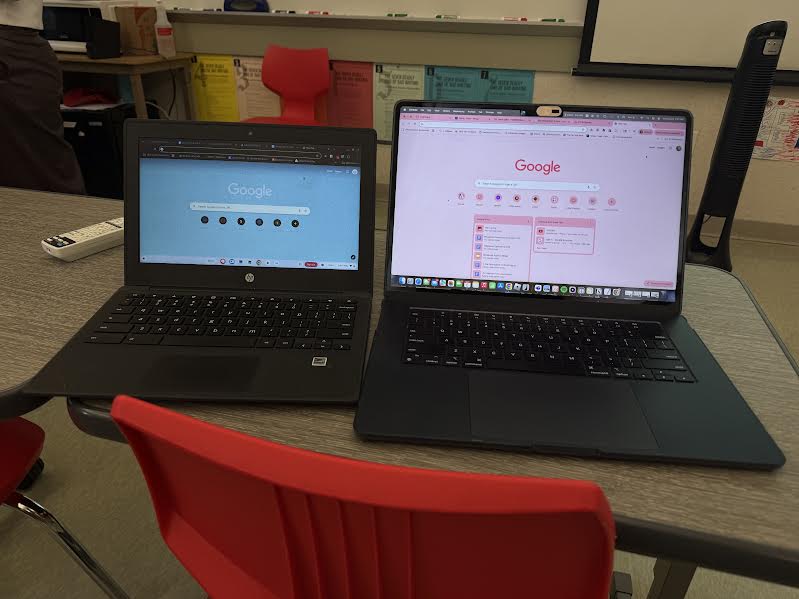
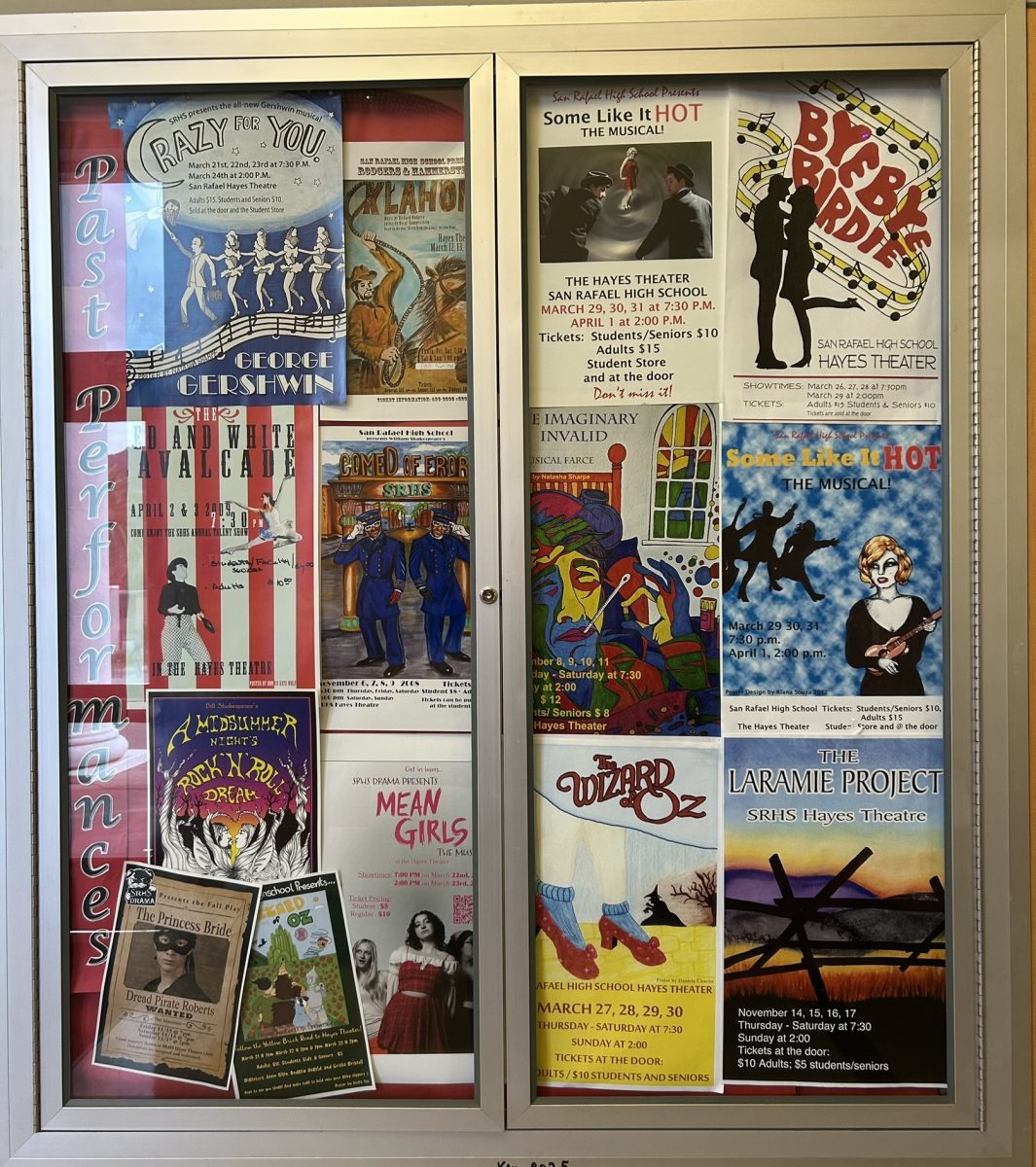
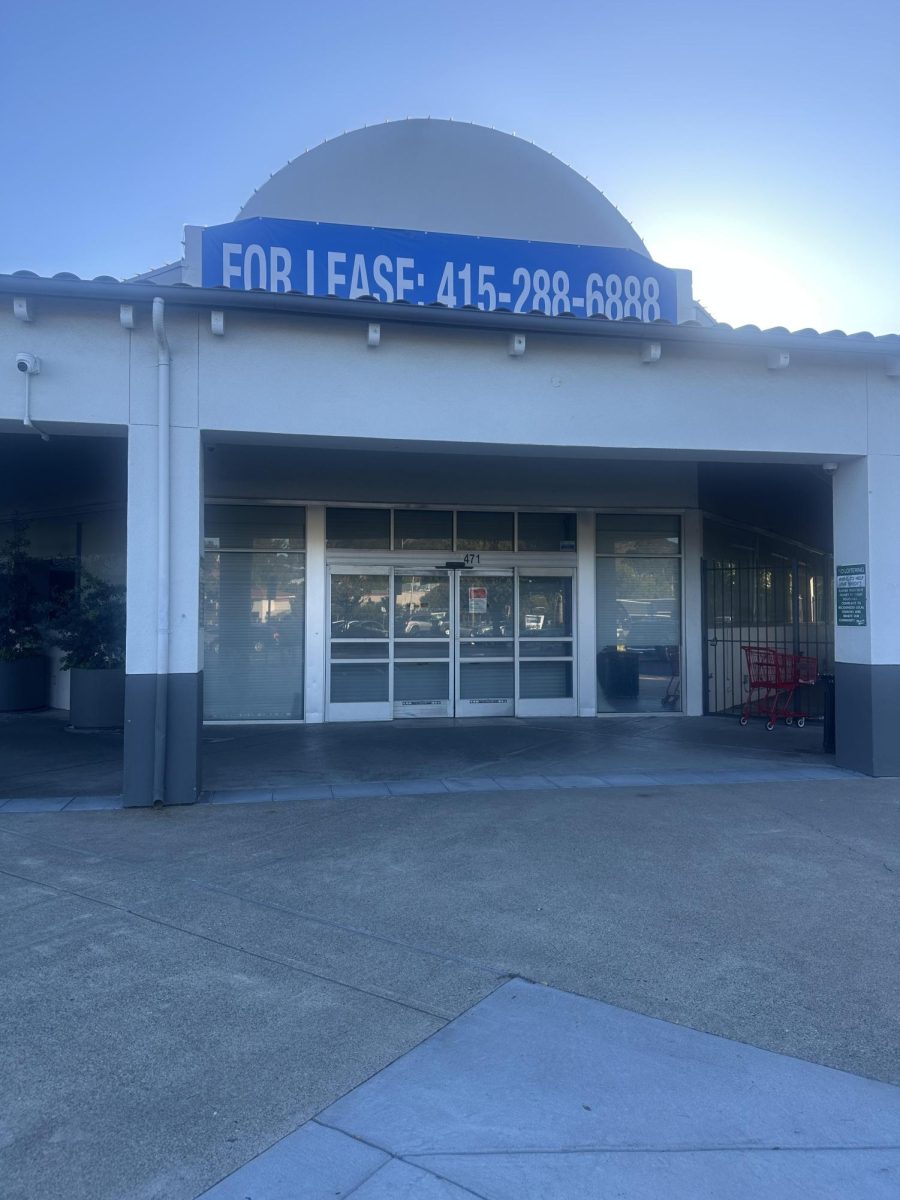
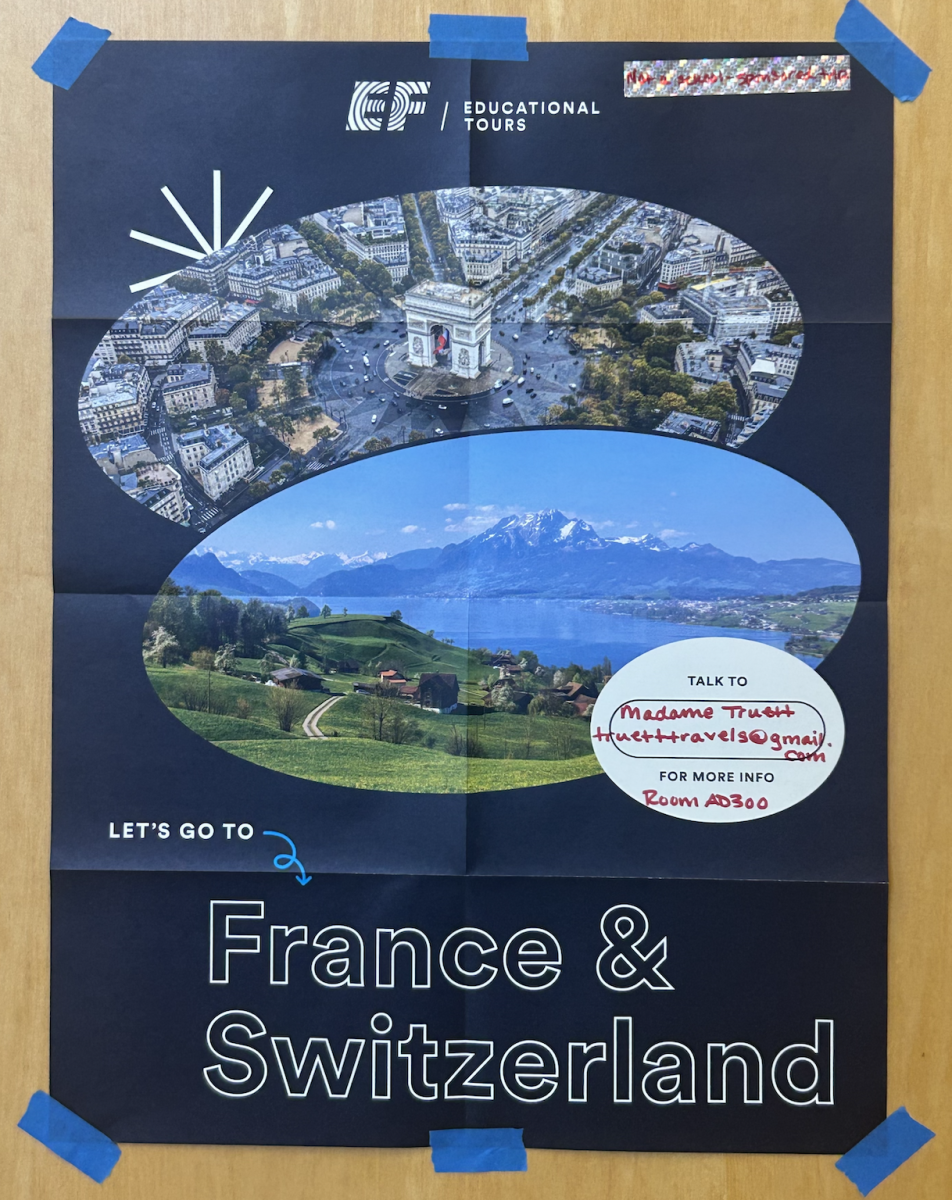
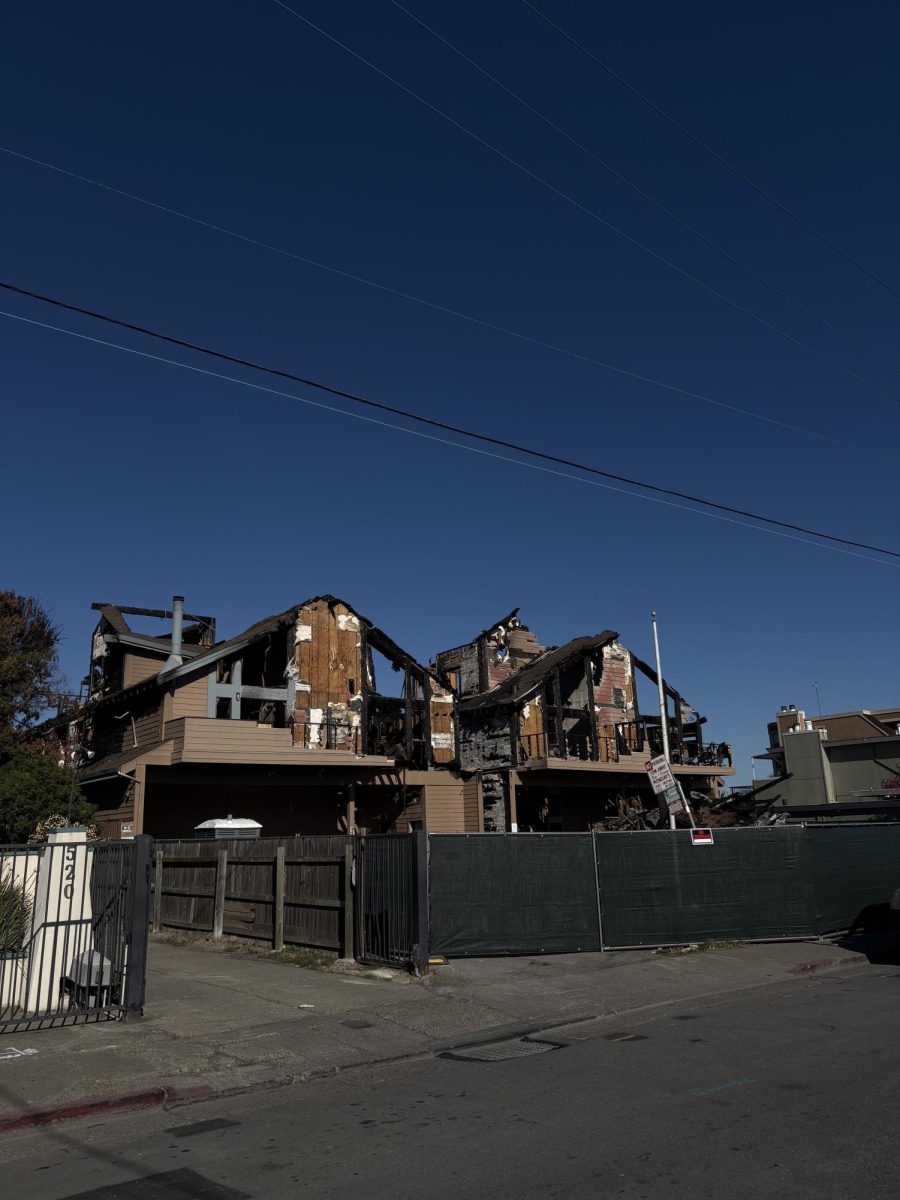










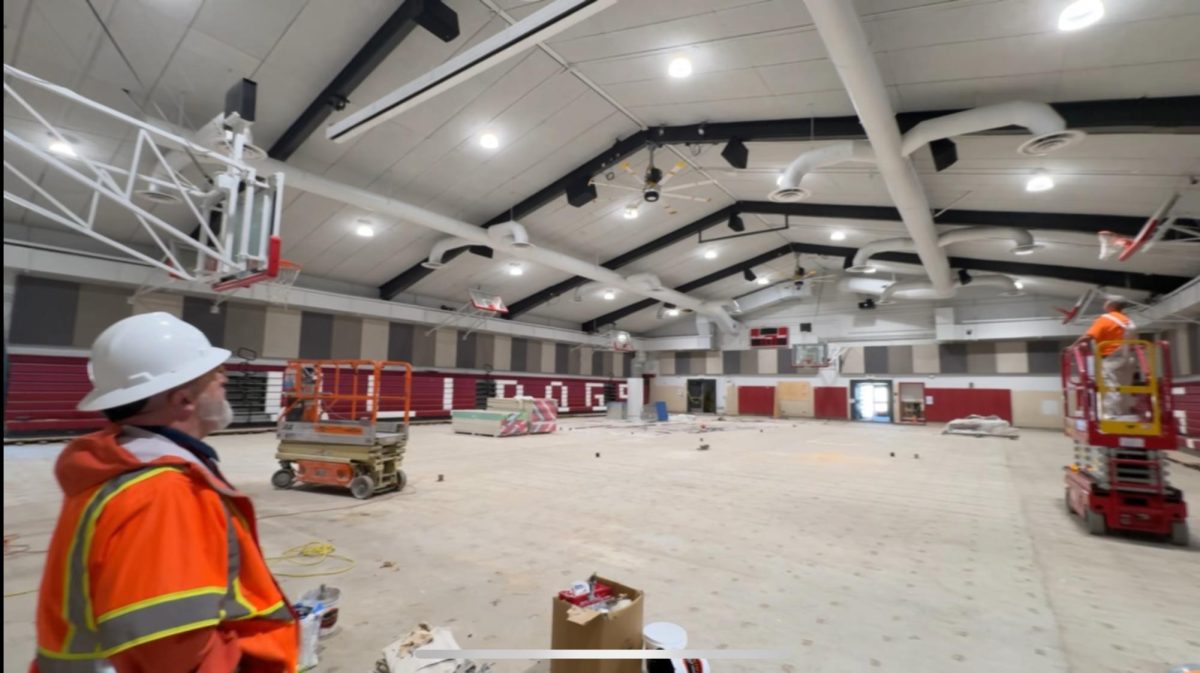



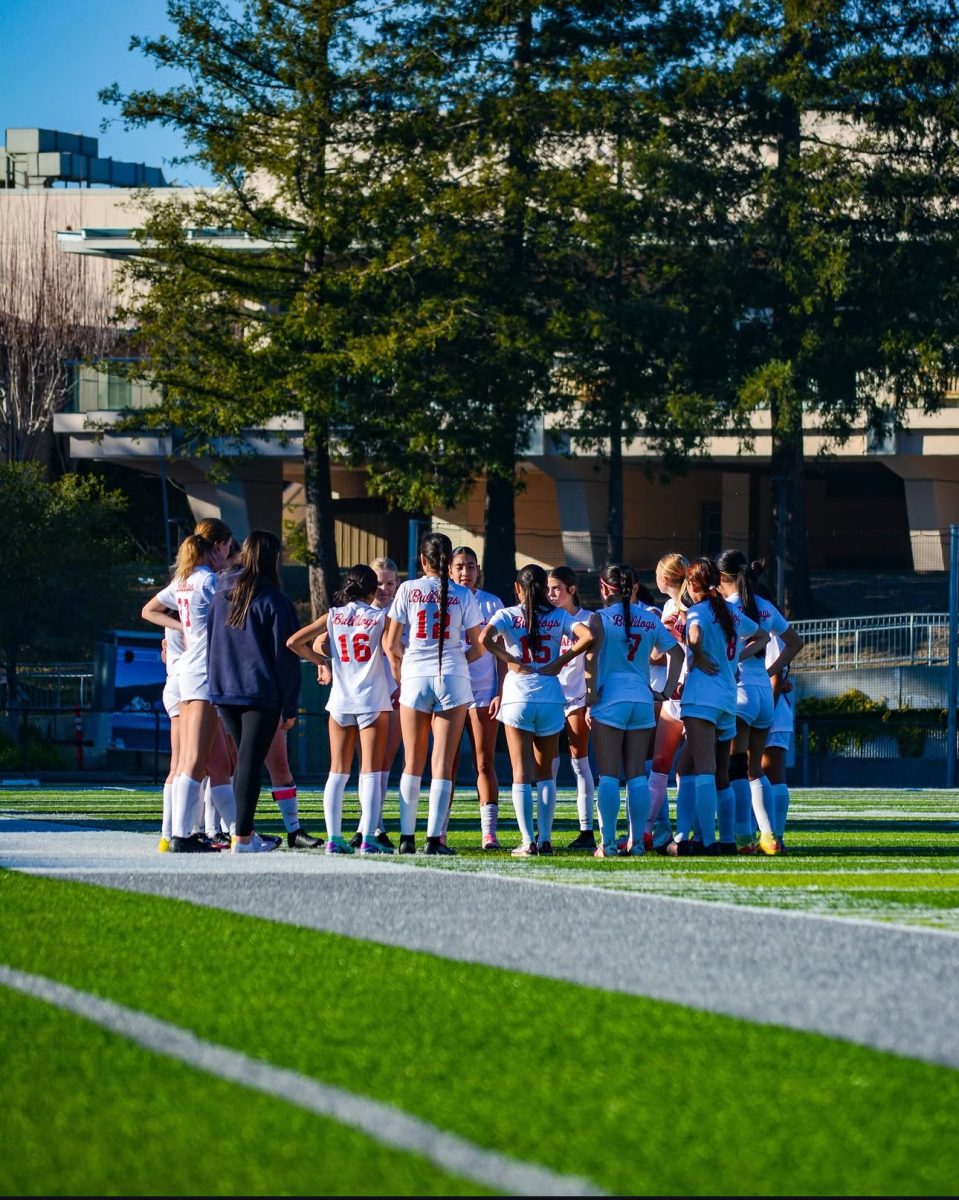

















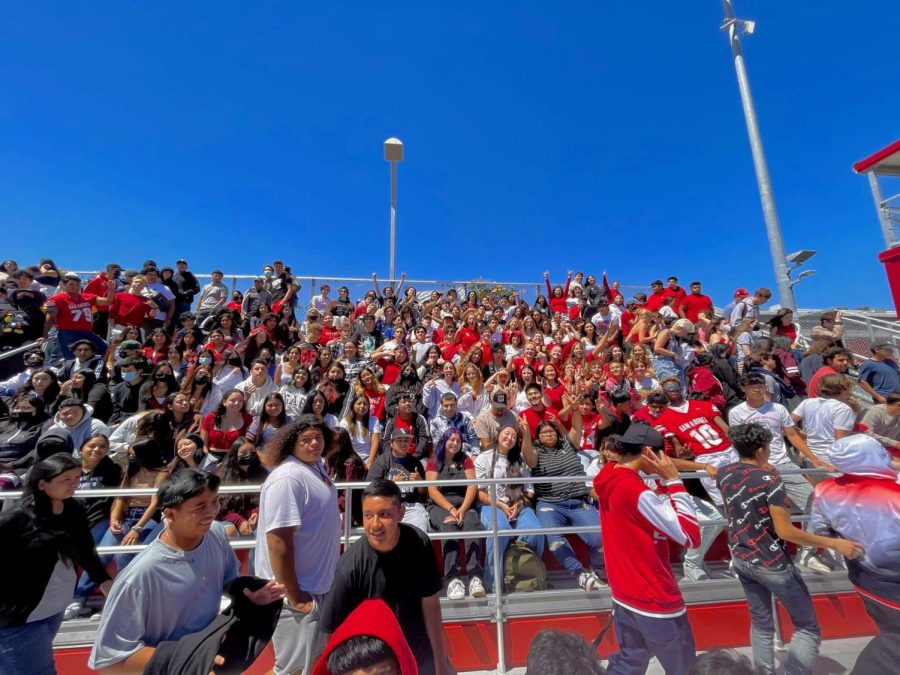
Olivia • Oct 3, 2022 at 10:01 pm
This is such an important topic that more people at SR and in general need to talk about. I recently graduated, but throughout my 4 years of schooling at SR it was obvious that there needs to be more of an effort to include and give more opportunities to BIPOC students, especially the students that don’t speak English fluently. I think SR is better than most Marin schools in that regard, but there is still so much room for improvement.
Thank you, Matteo, for bringing this topic to Off The Leash. You did a great job reporting and choosing an incredibly important topic to cover.